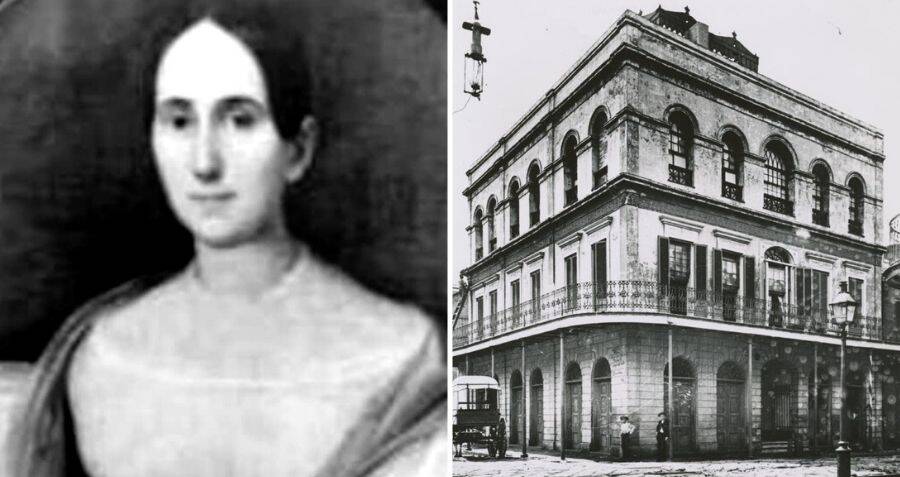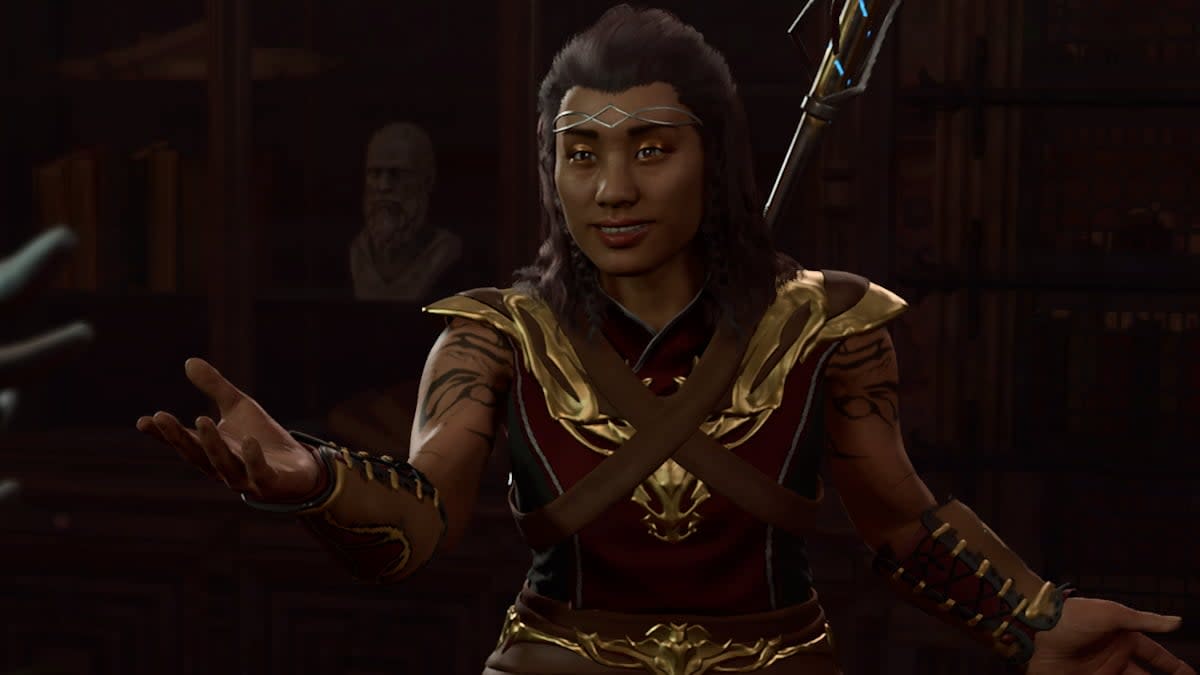Table Of Content
- Life Without Light: Creatures in the Dark With Sarah McAnulty
- What Happened To The Infamous LaLaurie Mansion In New Orleans?
- A quick primer on Los Angeles architectural styles
- This symbolic piece of New Orleans architecture is also home to a few ghastly stories.
- Get to know New Orleans' Most Haunted Places
- Lee Elder becomes first Black golfer to play in Masters

"The bricked up window," she went on, "That's not where the little girl fell out of." There, Delphine had started to abuse and torture her enslaved workers. Though she was kind to enslaved people in public — and had even freed two of them — she made life in the mansion a living nightmare.
Life Without Light: Creatures in the Dark With Sarah McAnulty
THE LALAURIE MANSION Set to Be Six Film Series - Dread Central
THE LALAURIE MANSION Set to Be Six Film Series.
Posted: Thu, 10 Sep 2020 07:00:00 GMT [source]
Two people she enslaved even jumped to their death from the mansion’s roof rather than face her brutality. The neighbor reported the incident to a local lawyer, and he was dispatched to the residence to remind the LaLauries of the law. Although he saw no mistreatment during his visit, the rumors of misconduct continued.
What Happened To The Infamous LaLaurie Mansion In New Orleans?
(The problem with unrequited love is that it is generally not, well, requited). Montreuil comforted himself, no doubt, by speaking of Delphine in a derogatory manner. Two weeks later, at the corner of Governor Nicholls and Royal Street, our guide was out on the streets again, bringing another tour around. She had positioned her group under a set of street lamps, burnt out for weeks. She launched into the story, but the minute she said the name "Leia," the lamps flickered on! The guide went on with the show--when she said the name "Leia" again, those same lamps blew out.
A quick primer on Los Angeles architectural styles
When the coachmen arrived back, the determined crowd met the carriage and began to destroy the carriage and stab the horses to death. Less than a year after the Battle of New Orleans, the fifty-year-old Jean Blanque passed away. Delphine, just twenty-eight years old, was left to settle Blanque's estate. His estate consisted of debts that totaled over $160,000, over $2.5 million in today's currency. In 1816, Delphine renounced their community property to the courts and forfeited all of their mutual assets, to protect and keep her personal property and assets. She was barely fourteen when she married her first husband, the 35-year-old widow, Ramon López y Ángulo de la Candelaria.
This is where the debate over slavery had been simmering for years. The legend of this New Orleans house of horrors did not disappear with its destruction. Nor did the disappearance of Dr. and Madame Lalaurie do anything to dampen the morbid curiosity and indignation that surrounded the story. In another, they found slaves tied up in uncomfortable positions and forced to wear spiked collars.

One must wonder if the young girls were playing pranks on each other, or if their claims that some phantom woman had scarred them was true. No memoirs exist from this period, just a scattering of accounts here. The mansion traditionally held to be LaLaurie's is a landmark in the French Quarter, in part because of its history and for its architectural significance. However, her house was burned by the mob, and the "LaLaurie Mansion" at 1140 Royal Street was in fact rebuilt after her departure from New Orleans. Today, nobody lives in this home, which belongs to the MAK Center for Art and Architecture.

Bystanders responding to the fire attempted to enter the slave quarters to ensure that everyone had been evacuated. Others said that the slaves were emaciated, showed signs of being flayed with a whip, were bound in restrictive postures and wore spiked iron collars. Rumors also abounded that dead bodies were found in the attic with their corpses mutilated beyond recognition. Our ghost tour guides are always asked, whatever happened to Madame LaLaurie?
Share this story
Letters between her and her children talk about a lingering illness she had been suffering from; it's safe to speculate that she probably succumbed to whatever this mysterious illness was. At the time of Delphine's childhood, New Orleans and much of the rest of Louisiana were under Spanish control, from 1763 to 1801. In 1800 she married her first husband, Don Ramón de Lopez y Angulo, who was a highly ranked officer in Spain's royal army. As was common for people in their position, they traveled to Spain and its other territories, but Don Ramón fell ill within a few years and died in Havana, leaving Delphine a young widow with a baby. Delphine LaLaurie, born in 1787, was a popular New Orleans socialite of Creole background.
Martineau's account, written in 1838, indicates that the enslaved people had been flayed, and wore spiked iron collars to prevent movement of the head. After this incident, an investigation took place, and charges of unusual cruelty leveled against Delphine. However, Delphine managed to use her family's connections to get them all back to Royal Street.
The house used in ‘American Horror Story: Coven’ is one of the most haunted houses in New Orleans - WGNO New Orleans
The house used in ‘American Horror Story: Coven’ is one of the most haunted houses in New Orleans.
Posted: Wed, 28 Oct 2015 07:00:00 GMT [source]
Generally, the Catholic Church only did this when the infant in question was close to death. Within a short amount of time, reports of physical assaults came to light. We know that young girls would approach their teachers, tears streaking down their faces, with their sleeves rolled up. The exposed flesh of their forearms were scratched and bruised. In her 1999 novel Fever Season, mystery writer Barbara Hambly incorporated the events of the 1834 fire and discovery of the brutal treatment of the slaves into her narrative. The structure that stands at 1140 Royal Street today was constructed in 1838 as a private residence and later used as a school and apartments.
If you want an in-person tour you’ll have to book in advance, and the city does require proof of vaccination to tour it. Los Angeles is a vibrant and active city, and one area it thrives is its architecture. Whether you’re looking for architectural masterpieces, iconic landmarks, or homes from movies and TV shows, Los Angeles has it all. Zendaya played boyfriend Tom Holland’s love interest MJ in the three most recent “Spider-Man” movies, the first to be included in the Marvel Cinematic Universe. She succeeded Dunst, who portrayed Mary Jane alongside Tobey Maguire in the original 2000s trilogy, and Emma Stone, who appeared opposite Andrew Garfield in 2012’s “The Amazing Spider-Man” and its 2014 sequel.
She and her husband Dr. Leonard Louis Nicolas LaLaurie bought the property in 1831 from Edmond Soniat Dufossat, which included a house already under construction, and he finished it for them. In 1832, the two-story mansion was completed with attached slave quarters. Realizing she was no longer welcomed in New Orleans, LaLaurie fled to Alabama, then onto Paris to live out the rest of her life. The LaLaurie Mansion still stands on the corner of Royal and Governor Nicholls streets and is a highlight of many New Orleans ghost tours due to its macabre and tragic history. Blanque went on to purchase a 2-story townhome on Royal and Conti, next door to the Bank of Louisiana where he was the director.
These deaths included a cook and laundress named Bonne and her four children. Court records also show that LaLaurie freed two of her slaves — one named Jean Louis in 1819 and another called Devince in 1832. Witnesses reported the incident and another investigation of the household was undertaken, this one ending with a conviction of illegal cruelty and the mandatory forfeiting of nine slaves.

No comments:
Post a Comment